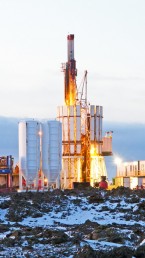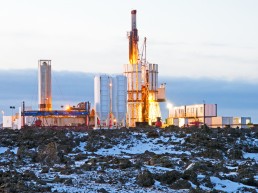Geothermal Resource Management
Effectively managing the resource is an essential part of successful geothermal utilization. A proper understanding of the geothermal system involved is required, and careful monitoring of the field is necessary.
Operational problems can be held to a minimum, and production from the field may be sustained for a long time when there is proper management. It is necessary to understand the geothermal field well in order to implement proper management. Such an understanding can only be gained by a sustained effort of data-gathering.
Monitoring the response to long-term production of a geothermal system provides the most important data on its nature and properties. These monitoring data also provide the basis for geothermal reservoir modelling.


In collaboration with Iceland GeoSurvey, GSE offers services related to the following aspects of geothermal resource management:
- Physical monitoring
Monitoring of the reservoir pressure and temperature, and measurement of the mass and heat transport through wells. This may be partly or fully automated, or carried out remotely.
- Chemical monitoring
Regular sampling and analysis to monitor the chemical composition of reservoir fluids. An early indication of cold water intrusion may be provided by changes in fluid chemistry.
- Indirect monitoring
Surface observations such as surface elevation measurements, micro-gravity observations, and micro-seismic monitoring may allow the detection of changes in the reservoir state.
- Geothermal system modelling
Development of a numerical model of a geothermal reservoir. It is used for the estimation of the production potential of the system and to optimize utilization strategies for the field.
- Reinjection planning
Reinjection wells are sited using numerical models of the reservoir, and flow paths in the system are mapped by performing tracer tests. Reinjection of geothermal effluent is in general the preferred method of disposal, but it also extends the useful life of a reservoir.
- Environmental monitoring
Parameters such as ground surface subsidence, gravity changes, the chemical composition and temperature of local groundwater, and gas emissions to the atmosphere are among the environmental parameters monitored. This way, any adverse effects of geothermal utilization on the environment may be addressed in a timely manner.
- Sustainability assessment
An estimation of the sustainable production potential of a geothermal system is made, and its sustainable utilization is planned following various scenarios. Such assessments are based on the premise that the geothermal resource should last for at least 100 to 300 years with proper management.
